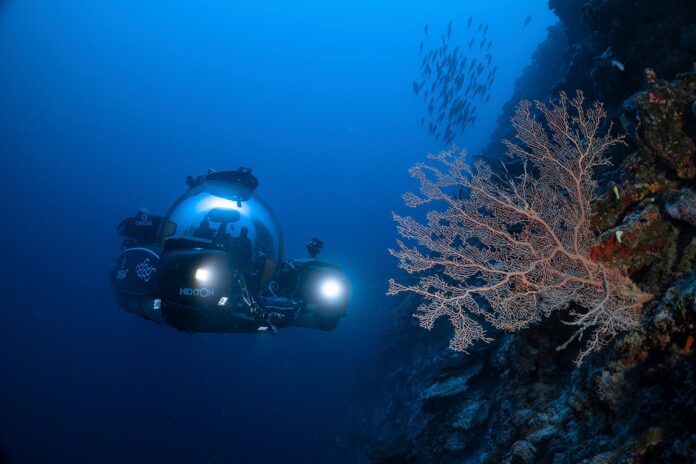The deep sea has long captivated our imaginations, with its vastness and mysterious nature. It is a world hidden beneath the waves, where sunlight rarely reaches and darkness prevails. Far below the surface, a realm of extraordinary beauty and diversity awaits, populated by creatures that have adapted to survive in extreme conditions. Exploring the deep sea is a monumental undertaking that has gradually revealed a treasure trove of hidden wonders.
The deep sea is defined as any part of the ocean below 200 meters (656 feet), where sunlight can no longer penetrate. It comprises more than 90% of the Earth’s biosphere and remains largely unexplored. The sheer depth and pressure, lack of light, and extreme temperatures make it an inhospitable environment for most forms of life. Yet, against all odds, a rich ecosystem thrives in the darkness.
One of the most intriguing features of the deep sea is its unique biodiversity. Many deep-sea organisms exhibit peculiar adaptations that enable them to survive in this hostile environment. From anglerfish with their bioluminescent lures to deep-sea squids capable of changing color and shape, the deep sea is home to a stunning array of life forms that have evolved in isolation. The pressure at such depths is immense, but creatures like the barreleye fish have developed transparent heads, allowing them to navigate without compromising their delicate bodies.
Exploring the deep sea has relied on technological advancements that continue to push the boundaries of human knowledge. Remotely operated vehicles (ROVs) and autonomous underwater vehicles (AUVs) have become crucial tools in deep-sea exploration. Equipped with cameras and sampling instruments, these vehicles can withstand the harsh conditions and capture footage and specimens from depths that were once thought unreachable. Scientists have used these tools to document and study previously unknown species, unlocking secrets of the deep.

One of the most remarkable recent discoveries in the deep sea is hydrothermal vents. These are fissures in the ocean floor where superheated water emerges, enriched with minerals and chemicals. Despite the extreme temperatures and high pressure, these vents support thriving ecosystems. Bacteria, giant tube worms, and other unique species have adapted to extract energy from the chemicals spewing from the vents, forming the basis of a complex food chain. Studying these ecosystems has provided valuable insights into the potential for life beyond Earth and the origins of life on our own planet.
Explorations in the deep sea have also shed light on the impacts of human activities. The deep sea is not immune to the reach of human influence, as plastic pollution, deep-sea mining, and oil and gas exploration pose threats to this delicate ecosystem. By studying the deep sea, scientists are gaining a better understanding of the potential consequences of these activities and the need for sustainable management practices.
Despite the progress made in deep-sea exploration, there is still so much left to discover. Countless mysteries await in the depths, and every new expedition brings the possibility of unearthing something truly extraordinary. The exploration of the deep sea is an ongoing endeavor, driven by the desire to unravel the secrets of our planet and expand our understanding of life itself.
In conclusion, exploring the deep sea is an awe-inspiring journey into the unknown. From the bizarre and fascinating adaptations of deep-sea creatures to the exploration of hydrothermal vents and the study of human impacts, it is a field of research that continues to amaze and inspire. With each dive into the depths, we inch closer to unraveling the mysteries of this hidden world and gaining a deeper appreciation for the wonders that lie beneath the surface of our vast oceans.

